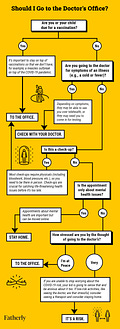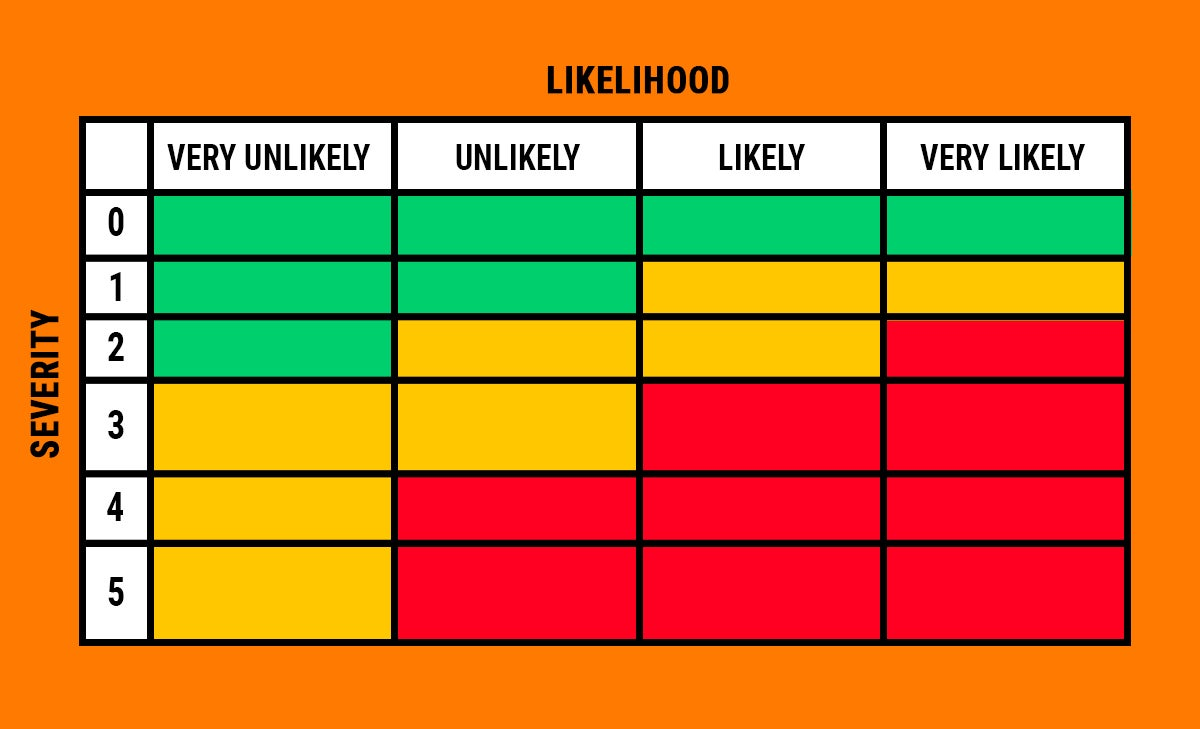The Risk of the Doctor’s Office During COVID
Skipping your annual physical *and* going into the doctor's office both risk your health. Which is the lesser of two evils?
The number of people seeking medical care has dropped dramatically during the pandemic. In some areas, less than half of children five-months-old and younger are up to date on their vaccinations. In March and April, the number of people going in for routine physicals dropped by 70-80 percent — and rates plummeted even more for cancer screenings. When COVID-19 cases are high, 57 percent of people say they would hesitate to go to the hospital even for an emergency.
This hesitancy is a major concern for doctors. “Routine doctor's appointments are more important now than ever before,” says Kristin Bencik, a pediatrician at Children’s Wisconsin. For kids, vaccinations are a big part of the reason why. “We don't want to see an outbreak of preventable diseases while we're trying to deal with a pandemic,” Bencik says. Mental health is another major reason. Both kids and adults are dealing with intense stress and anxiety right now, but it can be difficult to self-identify when those feelings need medical treatment. Doctors can spot mental health issues that need treatment and prescribe therapy and medication when necessary. Routine check-ups are also crucial for catching life-threatening conditions, which can be time-sensitive and shouldn’t be delayed.
If you’re worried about COVID-19, those very good reasons to go see a doctor might not be enough. But doctor’s offices are generally a safe place to be during a pandemic. “I feel safer in my office than I do going to the grocery store,” Bencik says. Clinics are well-versed in how to control disease outbreaks, and they’re taking extensive precautions such as masking, frequent cleaning, and reducing the number of patients in the waiting room. “There's no documentation of people coming into the office and getting sick from being in a doctor’s office,” Bencik says. And if COVID-19 rates are high in your neighborhood? That shouldn’t be too much of a concern. High rates are a reason to keep your kid home from a basketball game, not from a medical appointment, Bencik says.
That being said, you still might be hesitant, particularly if someone in your family is at high risk for severe COVID-19. If you want to stay home, telehealth is an appropriate option for many types of appointments, including to check in about mental health, rashes, symptoms of illness, and many more.
That’s a lot of factors to consider. Let’s map them out.
Using a Risk Assessment Matrix to Make the Doctor’s Appointment Decision
Often used by businesses and other organizations, risk assessment matrices help decision-makers consider the riskiness of a choice at a glance. When reading a matrix, first identify the choices you’re assessing — in this case, going to the doctor’s appointment, moving to telehealth, or pushing back the visit. Then, identify the factors that go into making those choices. The factors we will consider are public health, family health, child development, and family psychology. A basic matrix looks like this:
The risk matrix compares the severity of the potential consequences of a factor (from 0 to 5, or insignificant to catastrophic) to the likelihood of it happening. By putting those values into a color-coded table, you can get an immediate sense of the riskiness of a choice such as hosting a playdate.
For each choice, the four factors can fall into three different color categories: green, yellow, and red. Green means that the risk is low enough that you can make the choice without worry. Yellow means that you can go ahead with some precautions. If a factor falls in the red, be afraid. Stop and reduce risk before moving forward.
Different choices have different mixes of red, yellow, and green factors. No choice is perfect, but the “total score” for each choice can help you get a sense of the risk associated with it. That score is calculated by multiplying the severity of a factor’s consequences (0 to 5) by the likelihood of those consequences occurring, with Very Unlikely being 1 and Very Likely being 4. The higher the total score, the riskier the choice is.
The Three Factors
If you put the decision to go to a doctor’s office on a risk matrix, there are three factors you need to assess.
Public health: The risk that the action has on public health.
For example, skipping out on childhood vaccinations can put public health in jeopardy.
Family Health: The risk the action has on your family or child’s health.
For example, pushing off doctor’s appointments means you could have a life-threatening condition and not realize it.
Psychology: The risk the action has on your family’s psychology.
For example, an in-person appointment could make you stressed about picking up the coronavirus.
The Three Scenarios
In-Person Doctor’s Appointment
Total Score = 9
If your child needs a vaccination, going in for a visit is crucial for public health.
Going in for routine care and physicals can be crucial for your health, including by catching and monitoring life-threatening conditions.
The risk of catching COVID-19 at the doctor’s office is very low.
Telehealth Appointment
Total Score = 6
If you don’t need to see the doctor in person for something like getting your blood pressure checked, then telehealth can reduce your worries about getting COVID-19.
Some types of appointments require in-person visits and aren’t a good fit for telehealth.
Skipping the Appointment
Total Score = 14
Depending on what conditions you have or are at risk of, it may be important to see a doctor regularly, and skipping appointments could negatively affect your health.
If you skip your appointment out of fear of COVID-19, you may swap it with a fear that you’re risking your health by not going to the doctor.
The Bottom Line:
When we map the three scenarios, skipping the doctor’s appointment has the highest risk score at 14 because of the risk to family health and psychology. The next highest score is for in-person doctor’s visits with a score of 9. This option is fairly low-risk, but there is a small chance you could be exposed to COVID-19, and you’ll probably stress out about it. The lowest score is 6 for telehealth, but it only works if your doctor says an online visit will suffice. However, every household holds unique risks, so the total scores listed above won’t perfectly reflect the risk of each choice for you.
To set up a risk matrix for your own family, think about a potential consequence, for example, “family health” for your family’s overall health risk of skipping a doctor’s appointment. If the appointment is for an adult with conditions that need to be monitored, then this consequence is probably “Likely” to occur and may have a severity of “2” or “3.” Repeat this analysis for each factor and for each scenario. For public health and family health, it’s important to keep in mind that depending on where you live, your chance of getting and spreading COVID-19 at the doctor’s office is probably “Very Unlikely.”
Making the Decision
Now that you have a better sense of what the risks are, you can use this decision tree to get a personalized recommendation about whether your family should arrange in-person doctor’s appointments. Because your family is unique, and you have unique needs. This decision-making tool is here to guide you.




